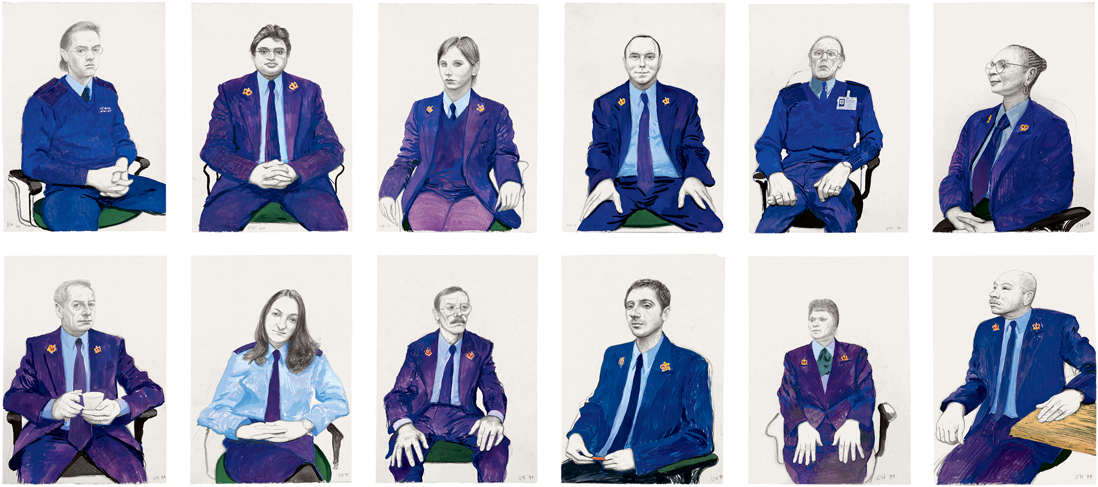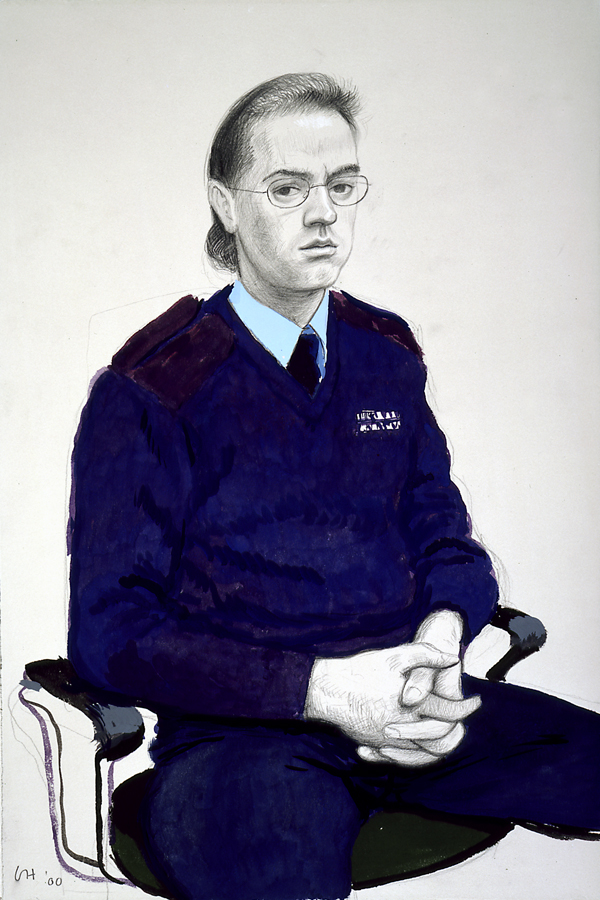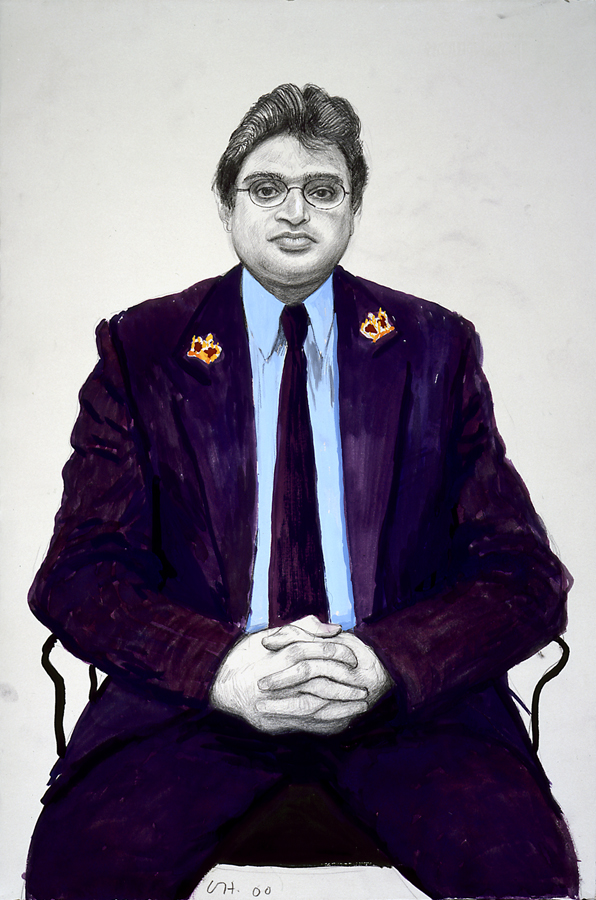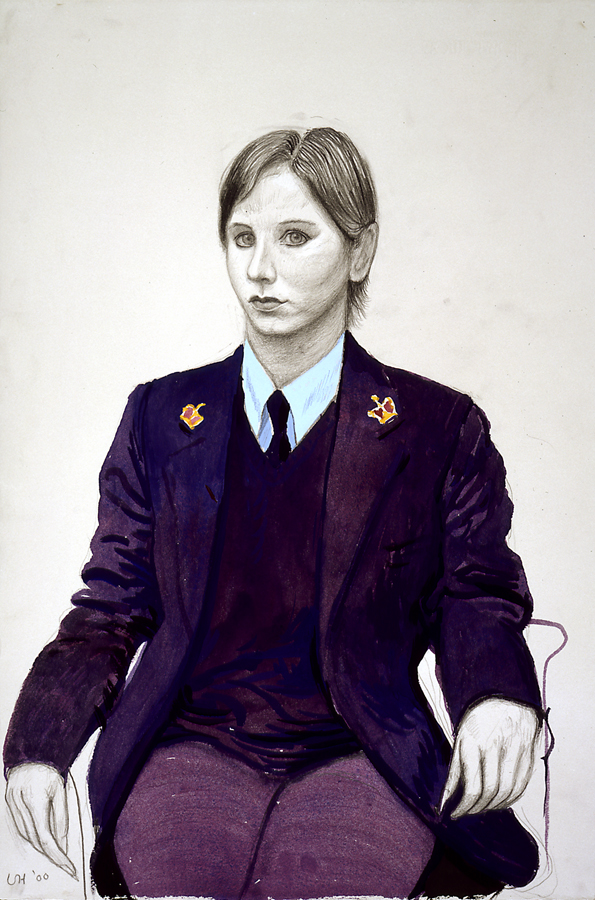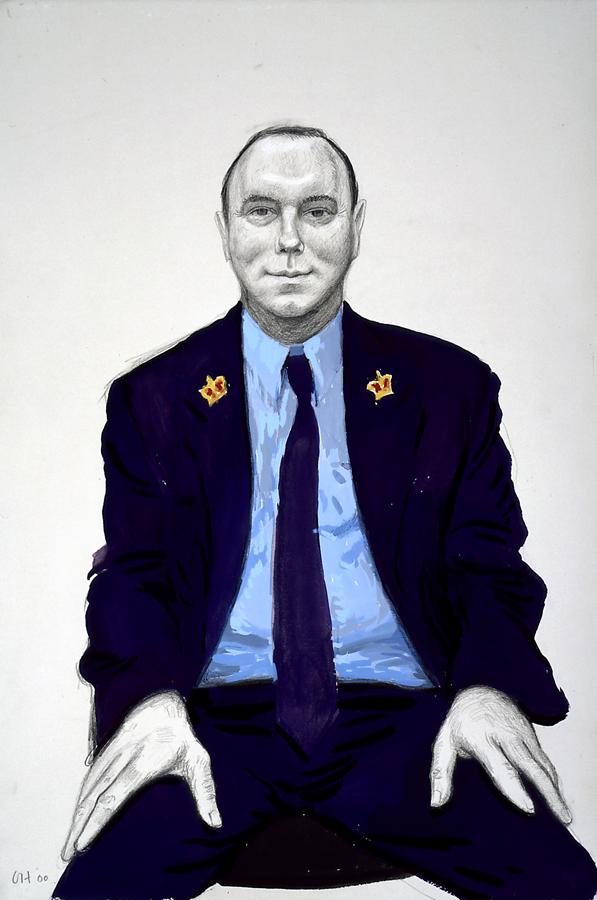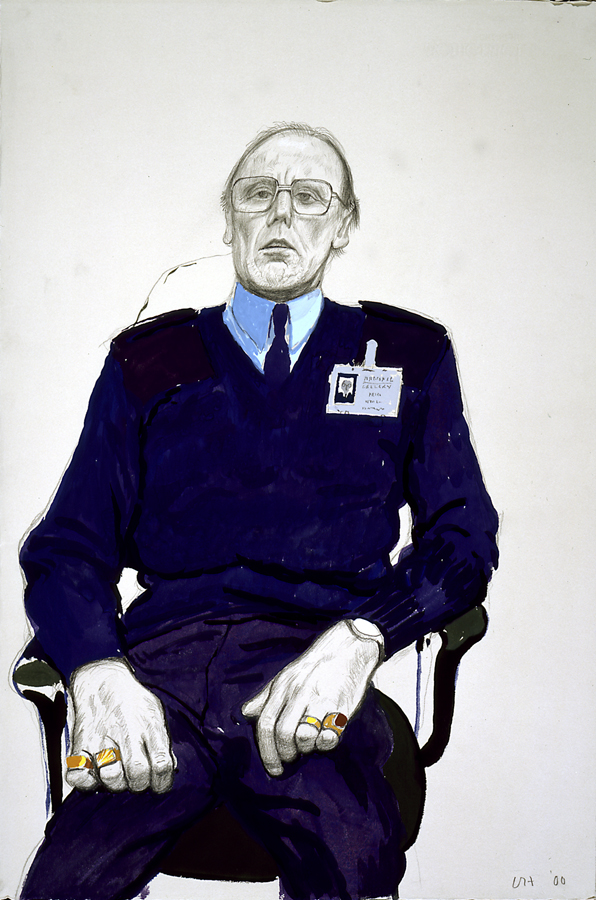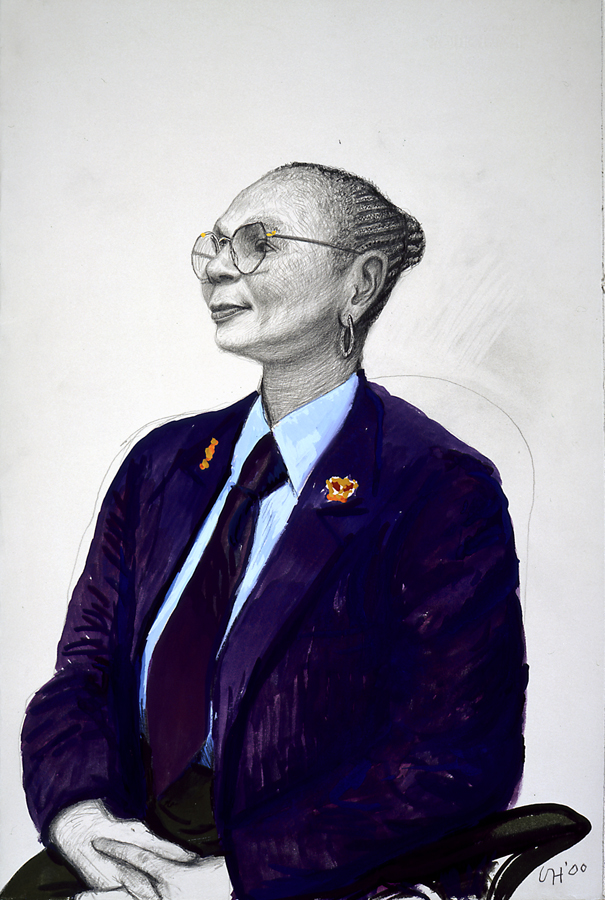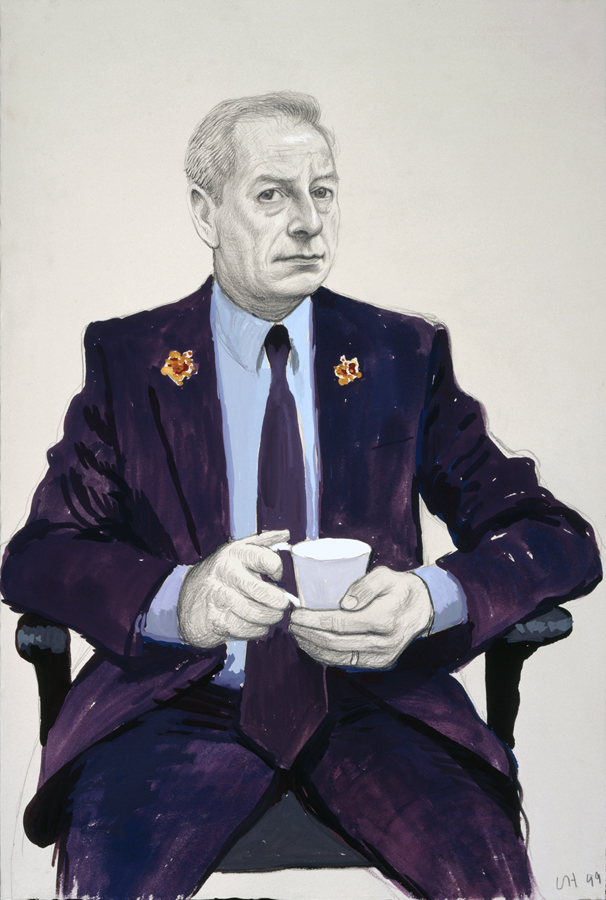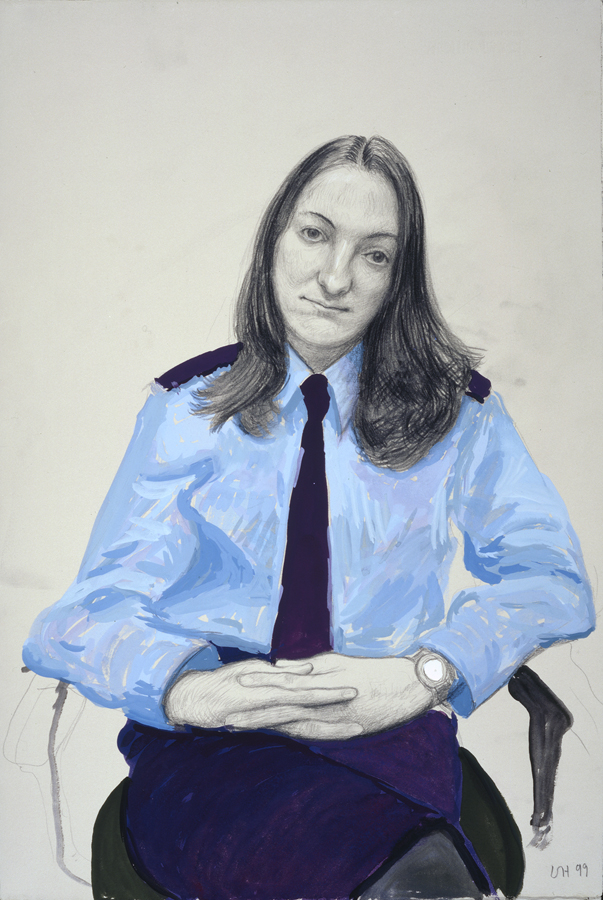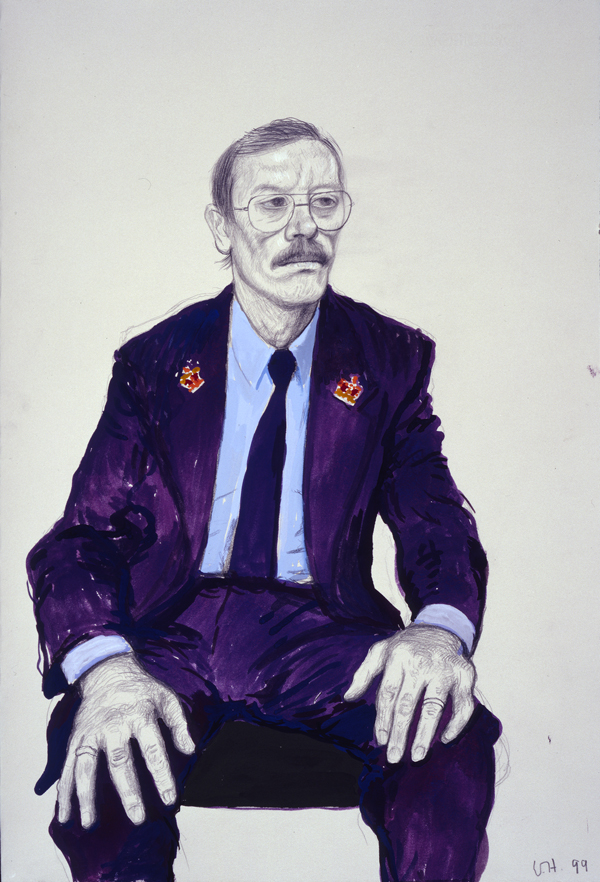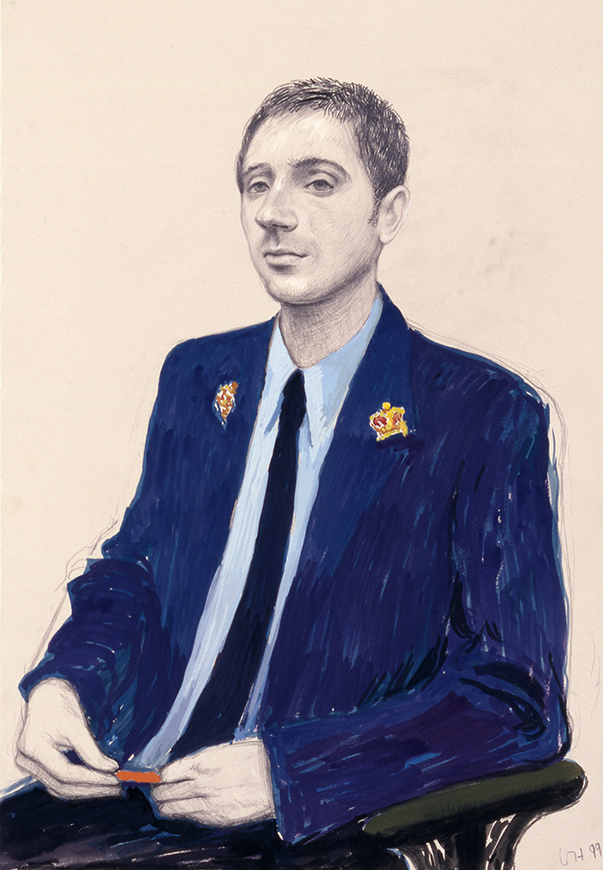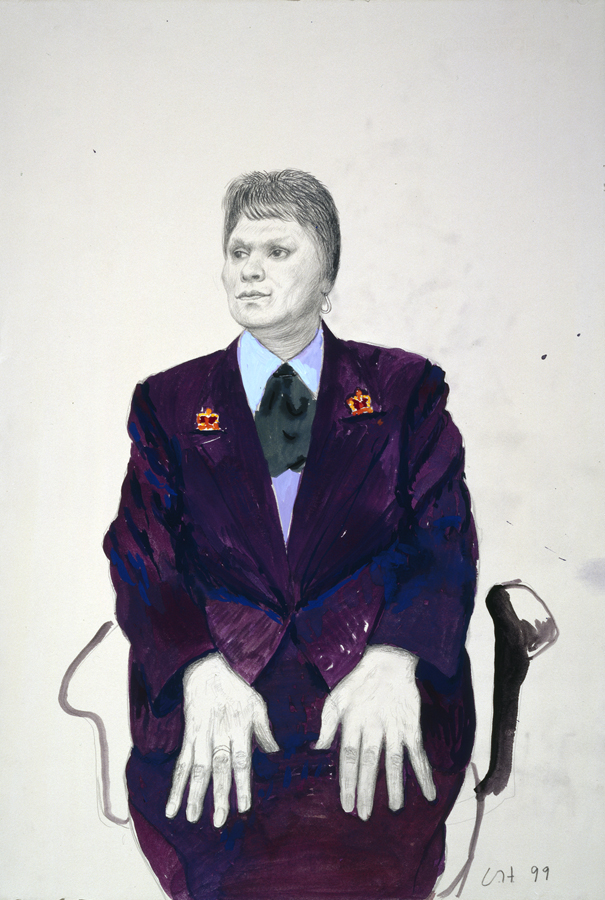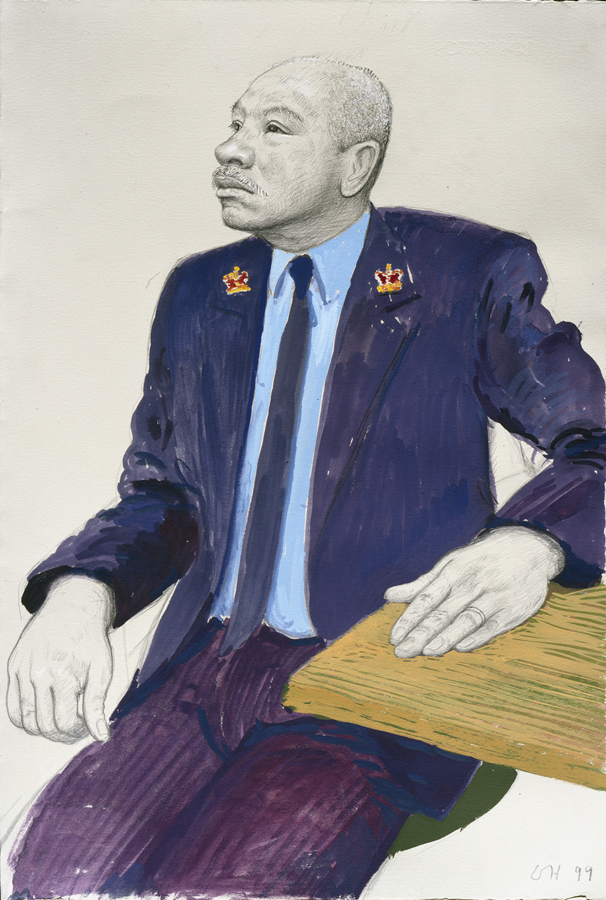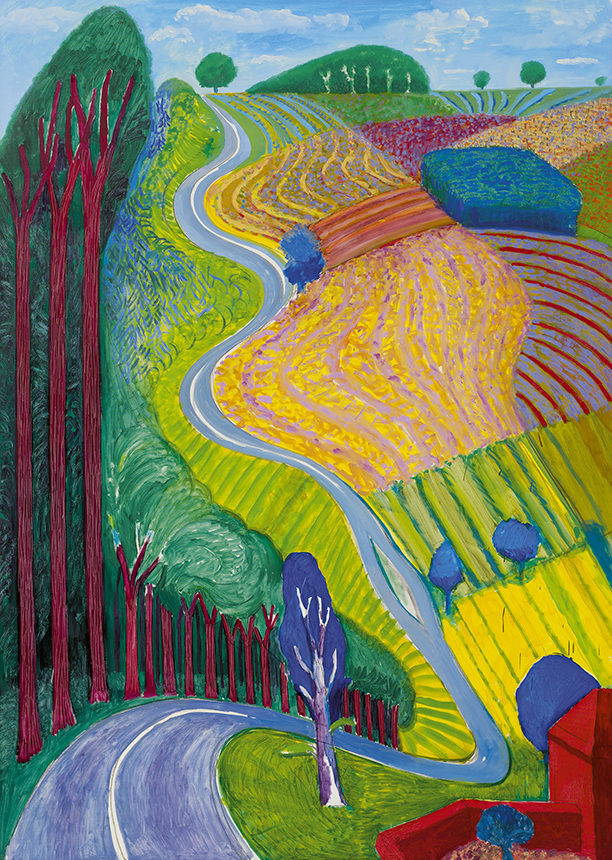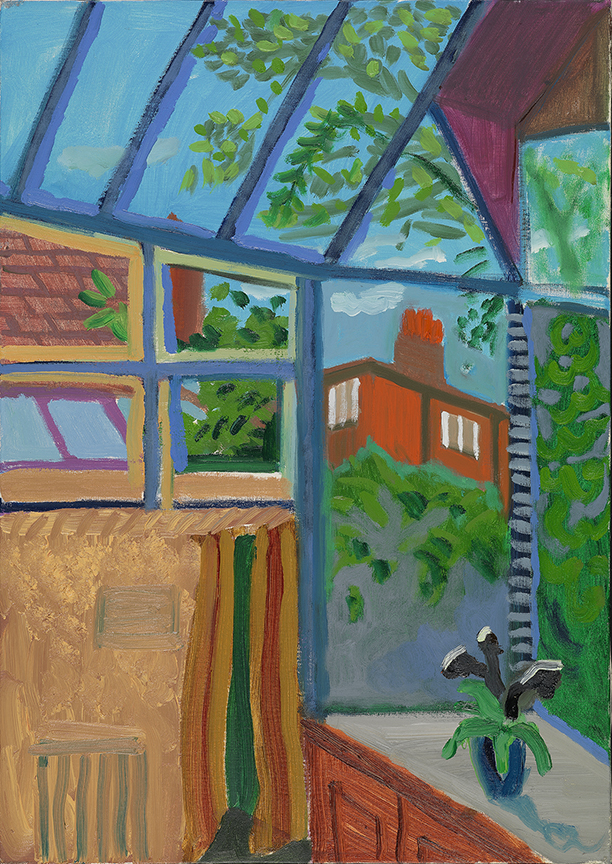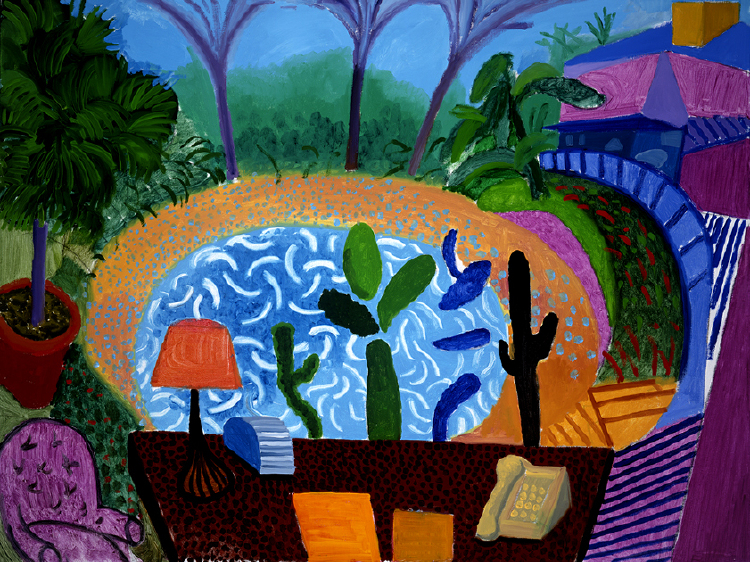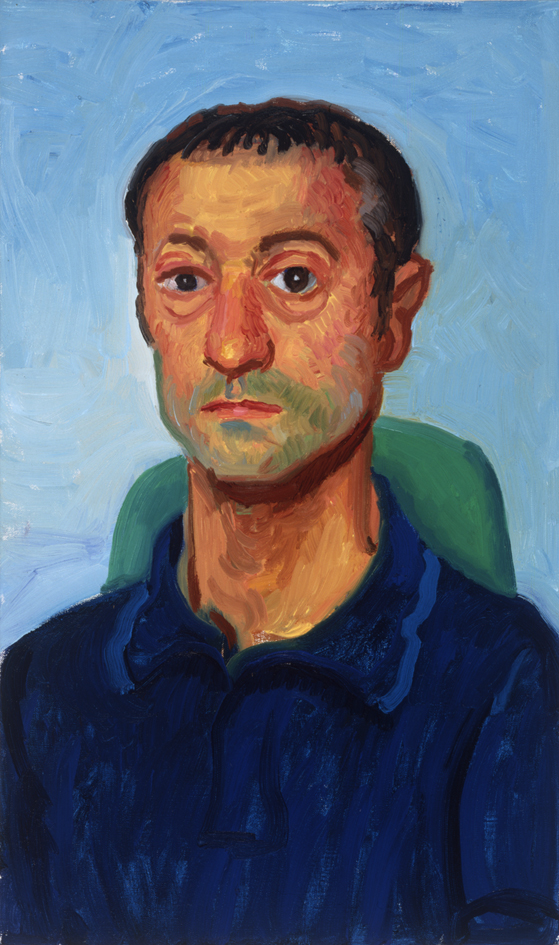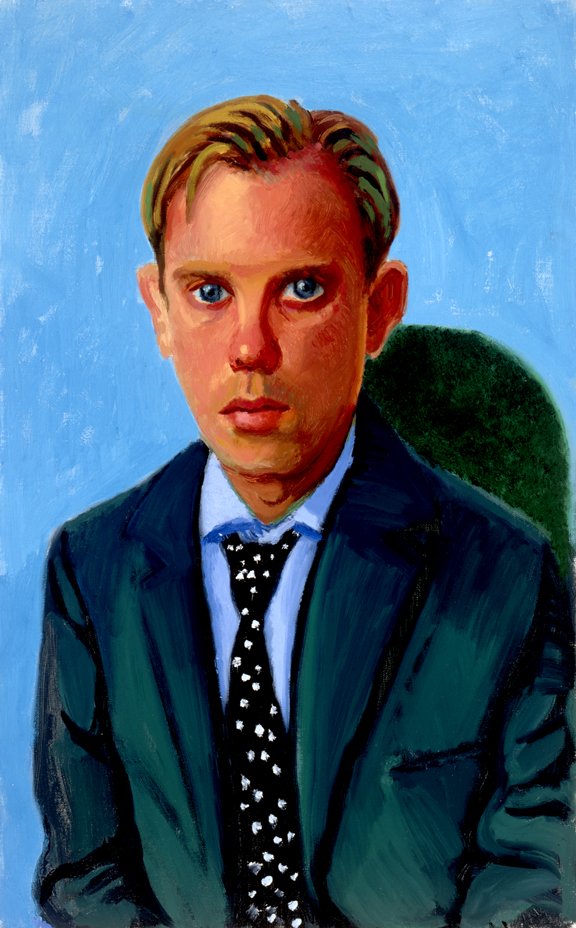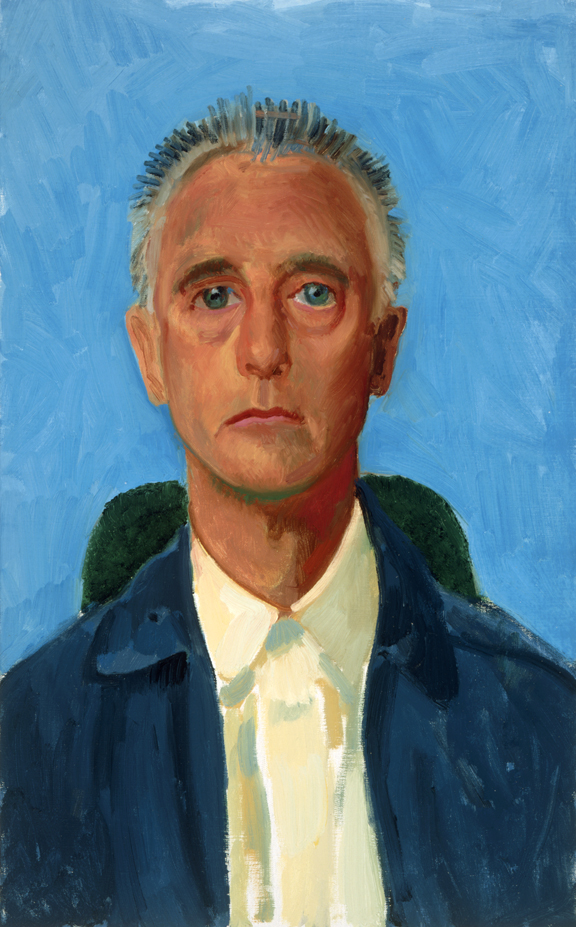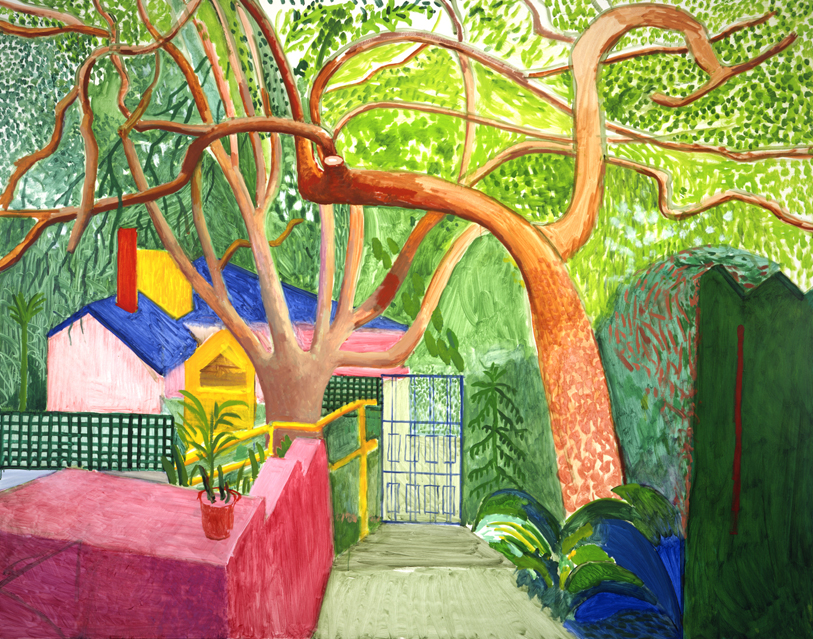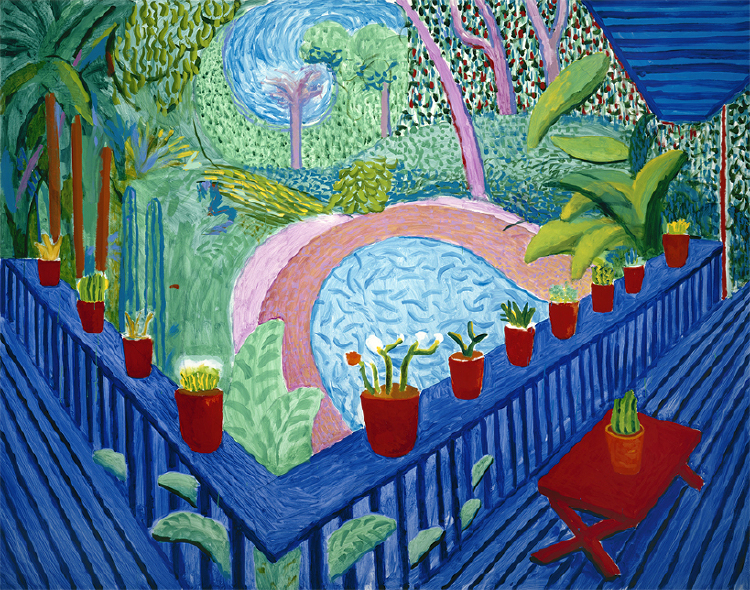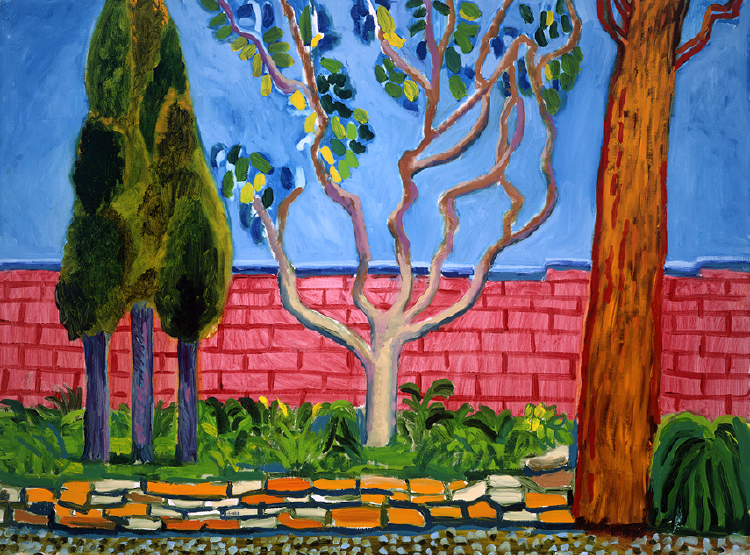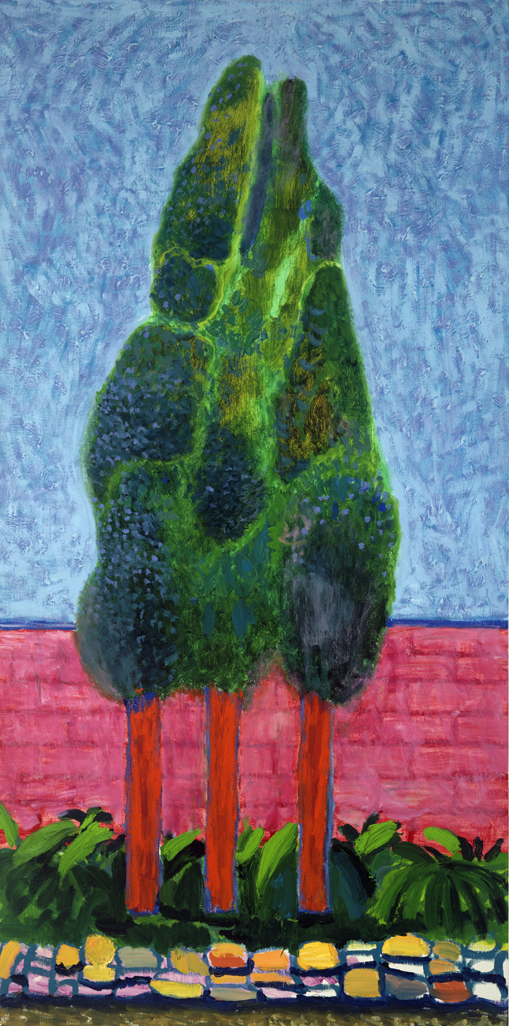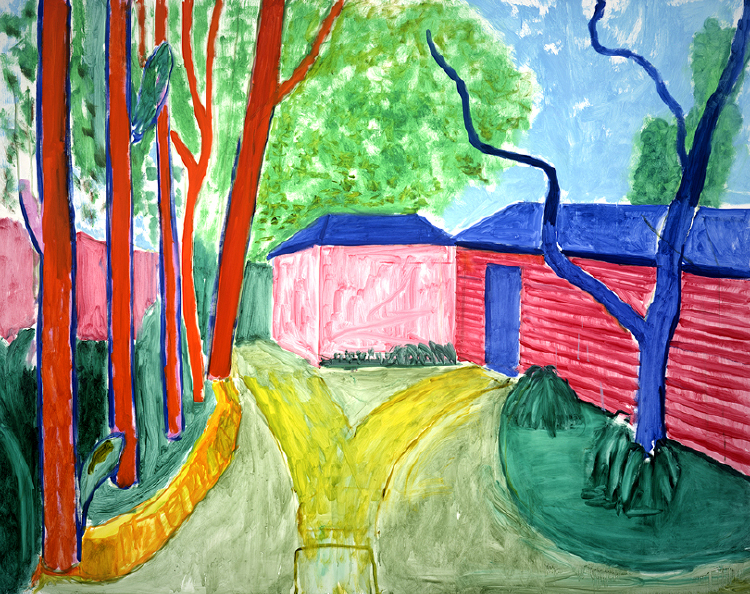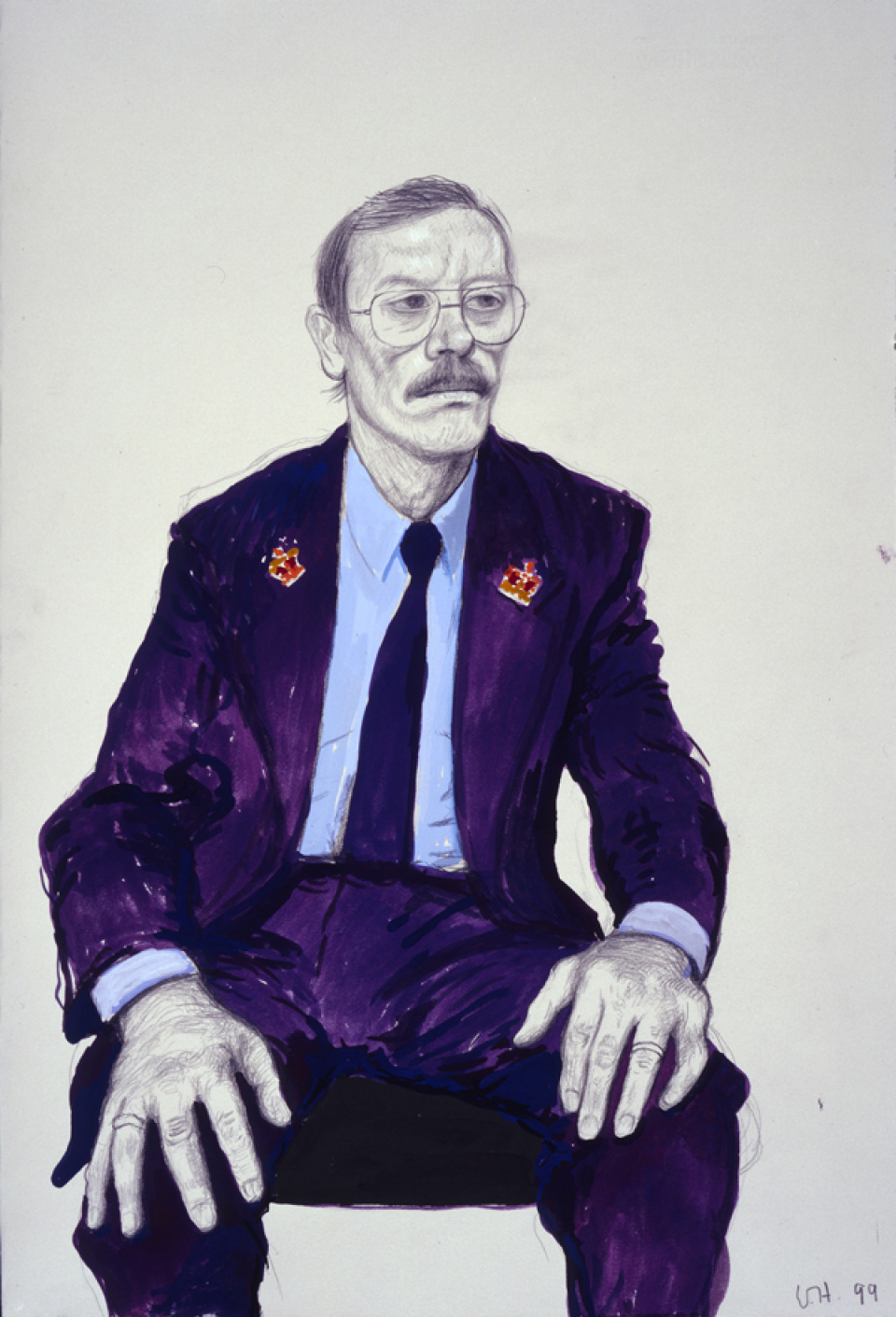
Writing Secret Knowledge
Hockney begins writing an art historical book detailing his research—via the visual rather than the written record—into the use of optical devices by the Old Masters. The project demonstrates his longtime fascination with the interplay of painting and photography in picture-making. With the input of art historians and scientists, he performs experiments to reconstruct how, in many masterpieces, the depiction of space was achieved through the projection onto a surface of a subject’s image via lens, which artists then traced and otherwise manipulated. In his Los Angeles studio, he creates The Great Wall of images charting five centuries of artistic development in the West, from the “pre-optics” of Byzantine mosaics (c. 1150) to an 1889 Post-Impressionist portrait by Vincent van Gogh.

The photographic moment
Using high-quality color photocopies, Hockney arranges the portraits chronologically on a horizontal axis (early to late, left to right) and geographically on a vertical axis (transitioning from Northern European works at the top to those from Southern Europe at the bottom). With The Great Wall assembled, he is able to pinpoint the moment in time, circa 1430, when artists began using optical devices, first apparently in Bruges with Jan van Eyck’s Portrait of Giovanni(?) Arnolfini and His Wife. Hockney realizes that portraiture from [NESTED]that moment going forward took on a photographic quality until the advent of printed photography around 1825 when painters began to loosen up.
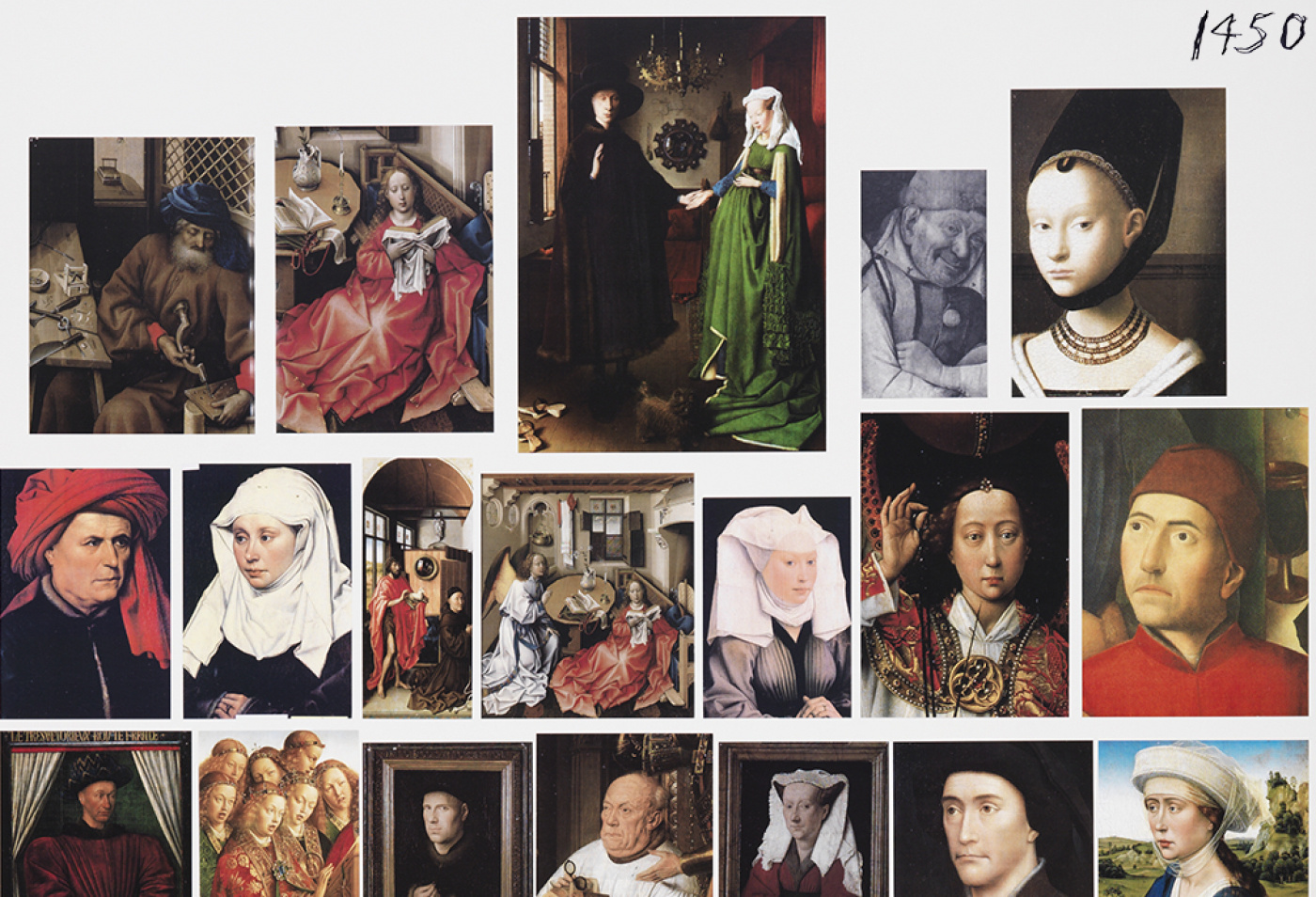
Optical devices are just tools. They don’t make marks, they don’t make the painting. You can draw using optical devices—and it actually is drawing, that is, an imaginative treatment of what you are dealing with. It’s not just tracing something. In any case, I’m not suggesting that these artists projected a whole picture, then just traced it. That’s not how it was done at all. I think Caravaggio made a sort of collage of elements pieced together very, very cleverly, very creatively. But it would have taken quite a bit of time to work out. Using a camera doesn’t diminish these artists at all. No lens could see the whole picture of Vermeer’s The Art of Painting, with everything in focus. No lens today could; no lens ever could.
Camera lucida portraits
Hockney grows increasingly proficient at using the camera lucida, and a show of these intricate drawings opens in late April at the Hammer Museum in Los Angeles, [NESTED]Likeness: Recent Portrait Drawings by David Hockney.
Now, for someone like me, trained in the conventional Carracci tradition—you know, plumb line, the extended thumb, gauging relative proportions and so forth—those pencil portraits of Ingres were mind-boggling. For one thing their size—how small they turn out to be when you see them in person. The images are ... incredibly detailed and incredibly assured. If you draw at all, you know that’s very rare and not at all easy.
12 Portraits after Ingres
For the exhibition, Encounters: New Art from Old, the National Gallery in London asks 24 artists of international renown to create original artworks reflecting the museum’s permanent collection. Hockney, who has been deeply invested in Jean-Auguste-Dominique Ingre’s small, delicately observed drawings of people since thrice visiting an exhibition of the neoclassical painter’s work at the Royal Academy the previous year, contributes drawings of the National Gallery’s security guards made with the assistance of his camera lucida: 12 Portraits after Ingres in a Uniform Style. With the guards themselves often near to the work within the gallery, visitors are able to assess the likenesses achieved firsthand.
Painting in London and Los Angeles
Staying in London through the summer, Hockney paints portraits, scenes from East Yorkshire, his studio garden, and recollected images of his Los [NESTED] Angeles garden and the Californian scenery. By September he returns to L.A. where he continues the theme of painting his surroundings, including the garden at his home and studio.
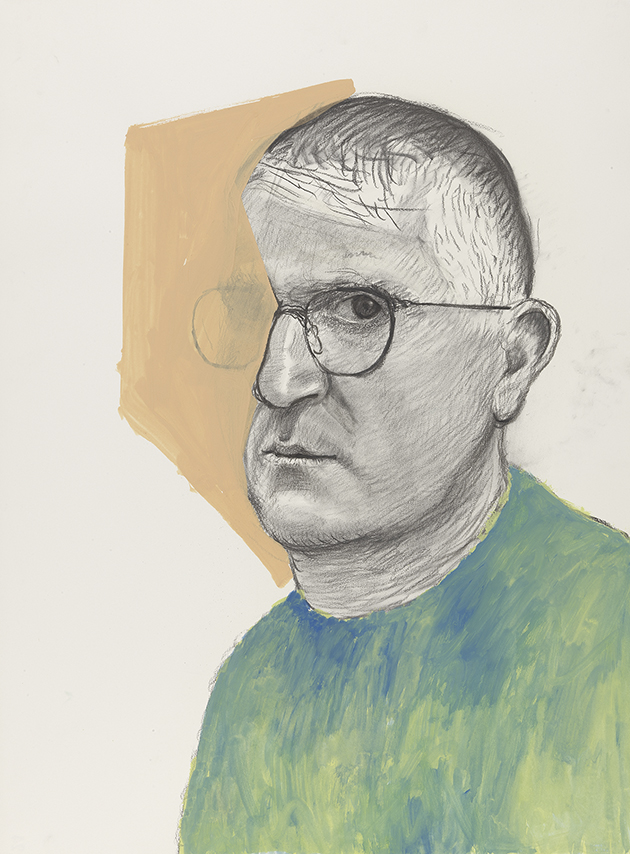
Exhibitions
Solo
- Likeness: Recent Portrait Drawings by David Hockney, Hammer Museum, Los Angeles, CA, USA (Apr 25–Jun 4).
- David Hockney, L.A. Louver, Venice, CA, USA (Jul 14–Aug 12).
Group
- Modern Art despite Modernism, Museum of Modern Art, New York, NY, USA (Mar 16–Jul 16); catalogue.
- Encounters: New Art from Old, National Gallery, London, UK (Jun 12–Sep 17); catalogue.
- American Perspectives: Photographs from the Polaroid Collection, Metropolitan Museum of Photography, Tokyo, Japan (Sep 12–Nov 12), travels to Museum EKI, Kyoto (Feb 17–Mar 14, 2001); Takamatsu City Museum of Art (Jun 1–Jul 1, 2001); Museum of Contemporary Art, Sapporo (Jul 21–Sep 2, 2001); catalogue.
- Telling Time, The National Gallery, London, UK (Oct 18, 2000–Jan 14, 2001); catalogue.
- Made in California: Art, Image, and Identity, 1900–2000, Los Angeles County Museum of Art, Los Angeles, CA, USA (Oct 22, 2000–Feb 25, 2001); catalogue.
- Painting the Century: 101 Portrait Masterpieces 1900–2000, National Portrait Gallery, London, UK (Oct 26, 2000–Feb 4, 2001); catalogue.
- Then and Now, Bradford Gallery and Cartwright Hall Gallery, Bradford, UK (Nov 25, 2000–Feb 11, 2001).
Honor
Honor
- Freedom of the City of Bradford Award, University of Bradford.
